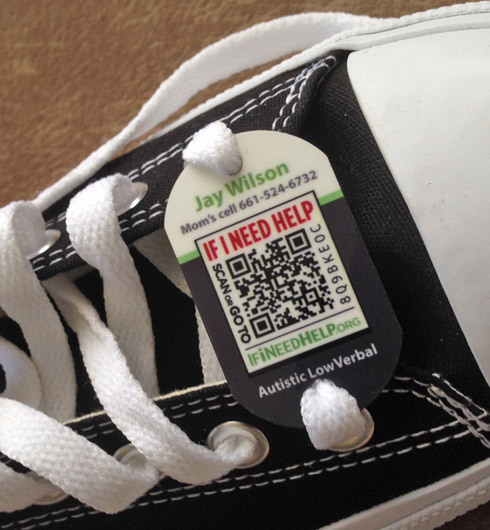On October 4th, 2013, Avonte Oquendo, an autistic 14-year-old boy, wandered away from his class at Riverview School in Long Island. Avonte ran past a distracted school security guard, unnoticed and out a door that had been carelessly left open, undetected. He was last seen alive on a school security camera running down a sidewalk and disappearing across the street. Tragically Avonte's body was found several months later in January of 2014 on the shore of the East River.
On July 4th, 2015, Omarion Humphrey, an autistic 9-year-old boy, went missing while visiting Abernathy Park in Davison Township Michigan with his foster family. His body was recovered six days later from Lake Callis near the park where he was last seen.
Between the tragic losses of Avonte Oquendo in 2013 and Omarion Humphrey this week, we have lost far too many autistic children and adults in wandering related tragedies. According to the recent media reports that I could locate on wandering related deaths in 2015 the world lost; Timothy W. 9, Jaquarious K. 18, Brian G 20, Carter K. 4, Michael B. 5, Jessy H 26, Jayden H 6, James E 15, Kaden L 8, Kobe L 5, Rayyan S 7, Adam E 5, unnamed boy 6, Jahmaine R 5. Jason Sims age 15 and Jesus Alex Guzman 18 are still listed as missing. These children are our children, and this could happen to any one of our own in the blink of an eye.
Autism and Wandering facts and statistics (from the The Autism Safety Coalition)
- 49 percent of children with autism engage in wandering behaviors
- 35 percent attempt to wander at least once per week
- More than one-third of children with autism who wander are never or rarely able to communicate their name, address, or phone number
- 29 percent of wandering happens from a classroom or school
- 53 percent of those who exhibited elopement behavior went missing long enough to cause concern
- 42 percent of cases involving a child with autism 9 and younger end in death
- Accidental drowning accounts for approximately 90 percent of lethal outcomes
We must be proactive and vigilant in reducing the risk of wandering within our homes, schools and communities. According to Wendy Fournier, President of the National Autism Association (NAA), most wandering behavior is a form of communication and typically occurs for one of two reasons. The child is either trying to get to something, or get away from something. Things like loud noises or bright lights could trigger a fight or flight response causing them to flee an uncomfortable situation, or they may wander to explore something of interest such as a park or swimming pool.
"In many cases -- especially with children who are drawn to water -- they have died within just minutes of leaving adult supervision. There often isn't time to start a coordinated search effort. We simply can't stress enough to caregivers that understanding triggers and implementing effective prevention strategies across all settings is crucial. The materials that NAA has developed over the past several years can be extremely helpful in developing a plan for prevention, and we are always here to help individual families address any unique situations that may be putting their child at risk."-- Wendy Fournier NAA President
Here are the four steps you should take right now to prevent and prepare for wandering.
2. Join NAA's mailing list to receive notification when thier next grant round opens for thier free Big Red Safety Boxes here which includes
- Two Door/ Window Alarms including batteries
- Avonte's Law would reduce the risk of injury and death relating to wandering in individuals with disabilities
"My son Jay who has severe Autism was lost at school. When I arrived for pick up another Mom came over to me and said 'I found Jay this morning.' I was like, 'oh glad you saw him today.' She said, 'No I mean I FOUND Jay this morning. He was by himself just inside the gate way after school started and no one else was around.' It took me a minute to process the magnitude of the dangers. He was in a placement with 1.5 adults for each child. I truly did not have the fear of him being lost at school until that moment. Fast forward a few more years and our nonprofit If I Need Help offers personal wearable QR codes on a variety of items. The codes link to a live profile that can be changed in real time. So if a different teacher takes them on a field trip that person's info can be entered and later deleted. The profile can be emailed to others when a search is needed." ~ Erin Wilson Founder If I Need Help
We must take action today as individuals and as a country to better protect those who cannot protect themselves. I urge all of you to take immediate measures to safeguard your home and community to reduce the risk of wandering. It is crucial everyone gets involved even if you are not a parent, grandparent or caretaker of an individual with a disability. Neighbors, friend's, teachers, first responders and community members I ask you to be an ally, please stand with us and speak for them. Discuss wandering prevention in your community, share the resources provided and please contact your senators. We cannot do this alone and this cannot happen without all of us working together.
I would like to thank Wendy Fournier NAA President, Erin Wilson Founder of If I Need Help, The Autism Safety Coalition and The AWAARE Collaboration for the use of their information and images.

